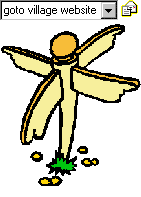
|
Recollections of a Working ForemanThe owner of Lark Hall Farm employed Henry Chapman as the working foreman in March 1954. The farm was run on advanced working methods with horses replaced by a Massey Ferguson 726 Combine harvester and two TF20 tractors growing cabbages, sugar beet, barley and wheat. Henry recalled those days for Radio Suffolk and below is a snippet that reflects an aspect of agricultural work of the 50’s. “We did have irrigation. It was the furrow system, I think the pipes were about 4 inch bore, they were about 30 foot long, we didn’t have an actual well or bore as such to extract the water. It was taken off the Waterboard....One or two snags if I turned the valve on to release the water too fast it would blow the joints on the pipe...the pipes though they were 30’ long, they were alloy, they were very light to carry. The only problem was though ...I did used to carry two on several occasions they were unwieldy things to move about especially in a crop of sugar beet where they met the row...I had to move them regularly..I suppose they’d run for about an hour and a half or something like that. I’d have to switch the whole system off move them along a further length of the pipe while the sprinkler were actually going I would be laying the next row of pipes..I can’t remember what the distance was apart probably 30 40 yards....I can’t remember anyone else in the area having...(an irrigation system)” Oral RecollectionsWhen I first came here everybody in the village worked in the farm, well Lark Hall and the main estate. You see that was a relatively big farming estate and when the chaps used to single the sugar beet - all done with a hand hoe. You would get 20+ people hoeing this beet and there were several fields of brussel sprouts. They were set by hand and the young plants were gathered in by hand in frosty weather. In fact when Mr. Rutterford had the farm we used to grow 20 acres and the crop went to the London Market. The trouble was that we were the lorries last pick up and sometimes it wouldn't turn up until 10 o'clock at night and if it was freezing they would be stiff like boards. Still I was young and didn't mind. When Mr. Rutterford came we were a bit ahead of the small farmers in Tuddenham. We had a combine when a lot of people hadn't got one and a John Deere tractor which instead of hoeing between rows of beet with horses there were implement bars attached to the tractor. Mr. Rutterford was a get ahead sort of chap. I have seen many changes, whether they have been for the better and all that. Everything used to be quiet and peaceful and no hurry or nothing. Now there's no pride in the work today. I mean a chap would go to plough a field, he'd have to have that field dead straight. Not any more I mean its a case of getting it over in the minimum of time, speed is everything. Only two years ago this field was sugar beet. Chap went a long way round to get across that field. I was speaking to the last old chap to retire from Mr. Gough. I said what ever would Freddie Borham think if he saw that. It used to be a skill and a pride. Get it done nowadays. We at Lark Hall had really good work men. If they did a job they did it well. Today farming must be a very lonely job, one man stuck out on a field all on his own all day. Images of farm machinery from the 1930’s and 40’sFordson iron wheeled tractor pulling reaper/binder. The large wheel visible
under the reaper powered all parts; the cutting blade, the sails and the
horizontal and angled canvas feeds up to the binding mechanism which in turn
ejected tied sheaves of corn.
© Radio Suffolk and interview of Henry Chapman by Camilla Saunders
|
|
A Forest Heath District Council (Suffolk) Project supported by the Heritage Lottery Fund as part of the Millennium Festival ©2000 Designed by ArtAtac |